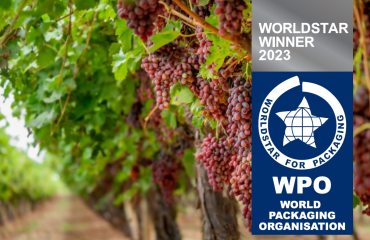
Australia’s recent Environment Ministers’ Meeting in Adelaide marked a pivotal moment in our commitment to a sustainable future. Here’s a glimpse into the transformative decisions made at the gathering on November 10, 2023.
Transitioning to a Circular Economy
National Packaging Laws: Ministers unanimously agreed to empower the Federal government as the regulator of packaging standards. New laws will mandate eco-friendly packaging design, set minimum recycled content, and ban harmful chemicals. This ensures a streamlined shopping experience, encouraging consumers to make environmentally conscious choices.
Recycling Traceability: Endorsing a global trend, the Ministers embraced a national traceability framework for recycled materials. This groundbreaking initiative ensures businesses confidently use recycled content, free from hidden contaminants. Australia is leading the way, showcasing how a traceability framework can drive the circular economy and global sustainability efforts.
Product Stewardship: A robust framework for product stewardship was agreed upon, emphasising collaboration across jurisdictions. Industries failing to adopt sustainable practices, such as the clothing textiles sector, are now on notice. If voluntary stewardship falls short, government regulations will step in to drive circularity in waste management.
Nature Positive Reforms
Global Biodiversity Framework: Australia commits to ambitious national targets aligning with the Global Biodiversity Framework. Prioritising actions like ecosystem restoration, tackling invasive species, and reducing the impact of plastics, the nation aims to protect 30% of land and oceans by 2030. Ensuring equitable participation, including First Nations people, is integral to achieving these goals.
Environmental Regional Planning: In a collaborative effort, South Australia joins Queensland in focusing on renewable energy in regional plans. These plans, addressing vital infrastructure priorities like renewable energy, transmission, critical minerals, and housing, provide a roadmap for holistic environmental management.
Feral Cat Threat Abatement Plan: All jurisdictions unite in a landmark agreement to combat the threat of feral cats. This collaborative effort sets a precedent for future joint plans, showcasing Australia’s commitment to preserving biodiversity.
Looking Ahead: National Emergency Preparedness
Ministers pledge to enhance environmental protection during natural disasters. Sharing progress in emergency response management systems by November 2023 ensures a comprehensive approach to mitigate the impact of natural disasters on our environment.
Australia stands at the forefront of sustainable change, navigating toward a greener, more resilient future. Stay tuned as we delve deeper into these transformative decisions on our blog, exploring the details and implications for a sustainable Australia.
Australia’s recent Environment Ministers’ Meeting in Adelaide marked a pivotal moment in our commitment to a sustainable future. Here’s a glimpse into the transformative decisions made at the gathering on November 10, 2023.
Transitioning to a Circular Economy
National Packaging Laws: Ministers unanimously agreed to empower the Federal government as the regulator of packaging standards. New laws will mandate eco-friendly packaging design, set minimum recycled content, and ban harmful chemicals. This ensures a streamlined shopping experience, encouraging consumers to make environmentally conscious choices.
Recycling Traceability: Endorsing a global trend, the Ministers embraced a national traceability framework for recycled materials. This groundbreaking initiative ensures businesses confidently use recycled content, free from hidden contaminants. Australia is leading the way, showcasing how a traceability framework can drive the circular economy and global sustainability efforts.
Product Stewardship: A robust framework for product stewardship was agreed upon, emphasizing collaboration across jurisdictions. Industries failing to adopt sustainable practices, such as the clothing textiles sector, are now on notice. If voluntary stewardship falls short, government regulations will step in to drive circularity in waste management.
Nature Positive Reforms
Global Biodiversity Framework: Australia commits to ambitious national targets aligning with the Global Biodiversity Framework. Prioritizing actions like ecosystem restoration, tackling invasive species, and reducing the impact of plastics, the nation aims to protect 30% of land and oceans by 2030. Ensuring equitable participation, including First Nations people, is integral to achieving these goals.
Environmental Regional Planning: In a collaborative effort, South Australia joins Queensland in focusing on renewable energy in regional plans. These plans, addressing vital infrastructure priorities like renewable energy, transmission, critical minerals, and housing, provide a roadmap for holistic environmental management.
Feral Cat Threat Abatement Plan: All jurisdictions unite in a landmark agreement to combat the threat of feral cats. This collaborative effort sets a precedent for future joint plans, showcasing Australia’s commitment to preserving biodiversity.
Looking Ahead: National Emergency Preparedness
Ministers pledge to enhance environmental protection during natural disasters. Sharing progress in emergency response management systems by November 2023 ensures a comprehensive approach to mitigate the impact of natural disasters on our environment.
Australia stands at the forefront of sustainable change, navigating toward a greener, more resilient future. Stay tuned as we delve deeper into these transformative decisions on our blog, exploring the details and implications for a sustainable Australia. Talk to us to discover the range of services and solutions we provide.







You must be logged in to post a comment.